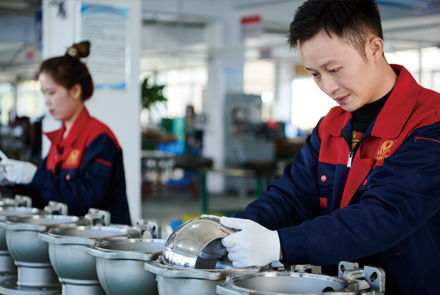发布时间:2022-07-14浏览量:0
The high temperature wear-resistant Japanese standard flanged ball valve, as soon as we hear the name, we know that it is a kind of ball valve made of Japanese standard, with high temperature resistance and wear resistance. It can be used in various harsh working environments and has a long service life. Great discount. Since the high temperature wear-resistant Japanese standard flanged ball valve has such a strong performance, what material is it made of?
The manufacturing materials of high-temperature Japanese standard flanged ball valves can be divided into polymer wear-resistant materials, alloy wear-resistant materials, ceramics and their composite wear-resistant materials according to their components.
1. There are two types of polymer wear-resistant materials: polyurethane rubber and ultra-high molecular weight polyethylene. Polyurethane rubber is a polymer composite material between plastic and rubber, and its wear resistance is 8 to 10 times that of the general one. UHMWPE has the characteristics of high abrasion resistance, corrosion resistance, impact resistance and aging resistance.
2. Alloy wear-resistant materials All kinds of metals are formed by adding various chemical elements. There are many types. Generally, they have the characteristics of high hardness and high wear resistance. Different types are suitable for different working temperatures.
3. Ceramic wear-resistant materials can be divided into ceramic wear-resistant coating materials (such as various alumina, chromium oxide, chromium carbide coatings, etc.), structural ceramic materials (alumina structural ceramics, silicon carbide structural ceramics, etc.), metal Ceramic wear-resistant material.
The above is the introduction of several materials often used in high-temperature wear-resistant Japanese standard flanged ball valves, which are also the fundamental guarantee for their strong wear-resistant performance.
